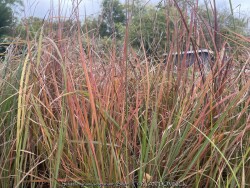
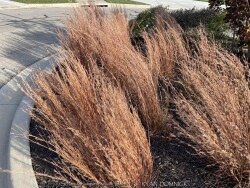
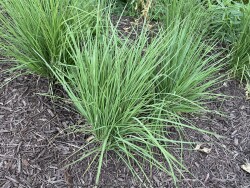
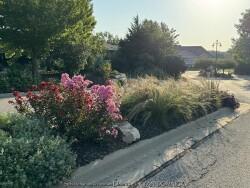
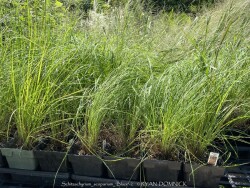
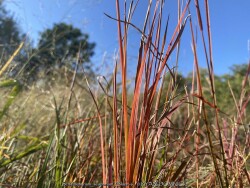
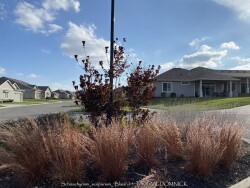
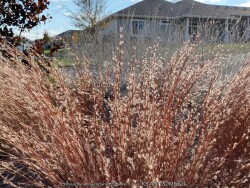
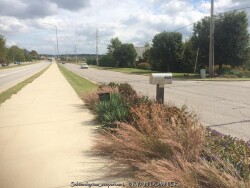
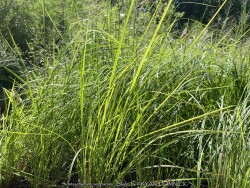
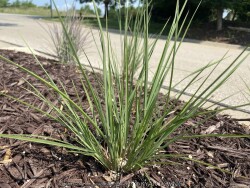
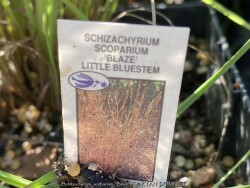
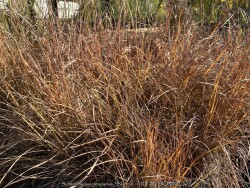

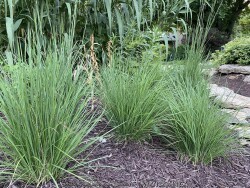
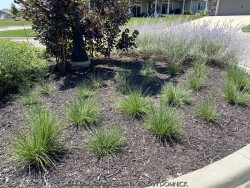
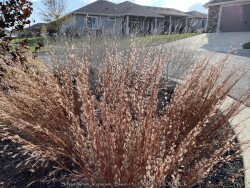

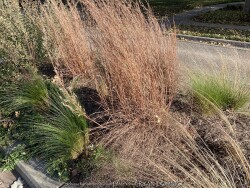
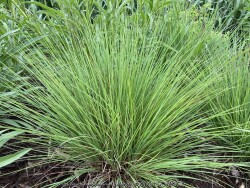
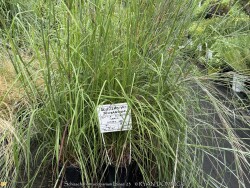
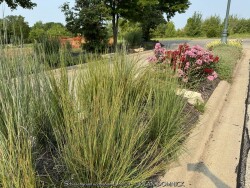

Plant Min Zone: 3a
Plant Max Zone: 9a
Sunlight: All Day Full Sun, Full Sun
Water / Rainfall: Very Low, Low, Average
Soil Quality: Poor, Average
Bloom Season: Late Summer, Fall
Flower Color: Maroon, Red
Berry / Fruit Color: Maroon, Red
Spring Foliage Color: Bluish Green, Purple
Summer Foliage Color: Reddish Green, Purple
Fall Foliage Color: Red, Orange, Pink
Evergreen Foliage: No
Winter Interest: Yes
Scented Flowers: No
Drought Tolerance: Medium, High
Wet-Feet Tolerance: Low
Humidity Tolerance: Low, Medium
Wind Tolerance: High
Poor Soil Tolerance: Clay Soils, Rocky Soils, Sandy Soils, Shallow Soils, Alkaline Soils (high PH)
Height: 2' - 3'
Width: 1.5' - 2'
Growth Rate: Medium
Service Life: Medium: 3-5 years
Maintenance Need: Low
Spreading Potential: Low
Yearly Trimming Tips: Trim Ornamental Grass to Ground in Early Spring before New Growth: Has Winter Interest.
Plant Grouping Size: Medium Grouping of 5-10, Mass Planting of 10 or more
Best Side of House: South Exposure, West Exposure
Extreme Planting Locations: Survives Severe Drought, Resistant to Rabbits, Top of Retaining Wall Locations
Ornamental Features: Long Lasting Fall Color, Bright Winter Color, Multiple Seasons of Interest, Fine Texture, Exceptional / Colorful Foliage
Special Landscape Uses: Groundcover, Erosion Control
Possible Pest Problems: Root Rot Disease, Stem/Crown Disease
Plant Limitations: Needs Excellent Drainage, May Needs Staking
Shippable in 2026: YES
Little bluestem (Schizachyrium scoparium) is a prominent prairie grass usually found in the short to medium grass prairies of Kansas and most common in the midwest and Great Plains. It also occurs sporadically throughout most of the United States in open areas where trees cannot grow. The spring and summer foliage is mint green to blue green. Depending on the variety, they gradually turn a reddish purple color in late summer progressing to deeper reddish purple, red, or orange by fall. At this time when the seed heads have extended, it is at its prettiest. As cold weather sets in and freezes occur, dried foliage turns a pinkish orange with tan and red shades again depending on the variety. Winter color is persistent and lasts until spring cut back in March. Little bluestem is very tolerant of different soils but prefers dry, sandy, loam, or clay soils with plenty of full sun. If planted in rich soil or given too much water, plants tend to grow too tall and flop by late summer. However, there are now improved cultivars that resist flopping. Good air circulation and some wind is needed to avoid rust diseases in humid areas. Sometimes if planted too shallow or if mulched too thickly, plants can heave and die in the winter. In the landscape, little bluestem looks best when planted in medium to large groups giving the look of a miniature prairie. It also combines very well with many other plants that have different textures and colors. Generally if given the proper placement and growing conditions, little bluestem will last indefinitely. Little bluestem as one of the four major grasses (along with Big bluestem, Indiangrass, and Switchgrass) covering millions of acres and Kansas including the Flint Hills. Where and when conditions are safe, it can be burned in late winter or early spring in a prairie or meadow before new growth appears. Many cultivars have been released improving foliage color and flop resistance. Blaze Little Bluestem Grass (Schizachyrium scoparium 'Blaze') is a cultivar originally selected by agronomists in Nebraska as a high yielding pasture grass. Blaze is also used ornamentally for its vivid red fall foliage. In winter it remains a standout as the leaves fade to deep pink and is considered one of the best for winter color.